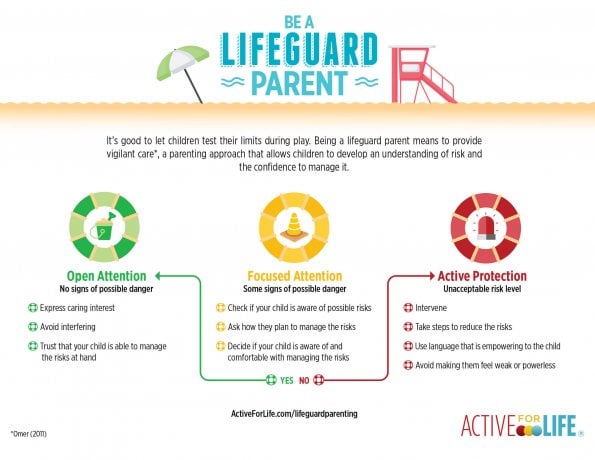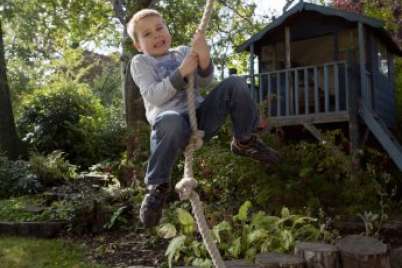
Be a lifeguard to your child’s “risky” play
Risky play is a hot button topic in parenting. Are you “overprotecting” your children? Or are you “putting them at risk” by allowing them to climb the monkey bars at the park?
Researchers are telling us that risky play is necessary for healthy child development. It’s essential for developing confidence and the ability to manage risk, and it’s associated with a host of benefits such as improved interpersonal skills and lower levels of anxiety. This is why everyone from educators to healthcare practitioners are starting to advocate for adventurous or risky play for kids.
But how can parents determine what is an acceptable risk and what is plain reckless and life-threatening? And what can they do to facilitate acceptable risk in their children’s play?
Vigilant care: The lifeguard approach
Dr. Mariana Brussoni, a developmental psychologist at the University of British Columbia and a leading proponent of children’s risky play, encourages parents to act like a lifeguard watching swimmers at the beach when they watch their child at play: the lifeguard doesn’t intervene unless someone is really at risk for harm.
This type of general approach is described as “vigilant care” by Dr. Haim Omer. Vigilant care is about parents simply staying alert “with an ear to the ground” as they watch their children engage in potentially dangerous activities. It’s a different approach from the obsessive kind of anxious parental monitoring known as helicopter parenting.
In play settings, vigilant care means parents avoid interfering in their children’s play and send fewer controlling messages. At the same time, they act decisively through three progressive stages if they see clear signs of danger: open attention, focused attention, and active protection.
1. Open attention
When observing their children’s play, this is where parents should operate most of the time. They express caring interest as they watch their children, but they avoid interfering in their play as much as possible, trusting that their children are able to manage the risks at hand.
2. Focused attention
At this stage, parents start to perceive some early warning signs in their children’s play. Some element of danger has presented itself that may push the edges of acceptable risk. The parents check in with their children to see if they are aware of the risk and if they feel comfortable managing it. If yes, the parents go back to practicing simple observation and open attention.
3. Active protection
The level of risk has become unacceptable, so it’s time for the parents to intervene and take steps to reduce the risk. Still, it’s important that parents continue to use language that’s empowering to their children. It’s not beneficial to make them feel weak and powerless: the goal is to help them to develop a better understanding of risk when they are playing and give them the confidence to manage it.
Related podcast: Dr. Mariana Brussoni on why risky play is good for children
Risky play has important benefits for our children. Managed in the right manner, it can help children to develop their confidence, improve their movement skills, and increase their physical activity.
Where do you sit in relation to risky play? Do you believe in hovering like a helicopter? Or do you support the idea of vigilant care? Add your comments below or share your thoughts on our Facebook page.







Well done. I like the simple language for parents to understand and the lifeguard analogy. IF children learn to reach, climb, swing and jump at a young age they also build confidence and self esteem which will be used as they age in a variety of recreational and sport movements.